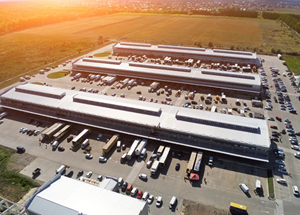Sign up to be notified of our new blog posts.
Identifying Production Bottlenecks in Process Manufacturing Operations
Posted on December 01, 2021

If you’re involved in a process manufacturing operation, you likely spend a lot of time thinking about production bottlenecks. Perhaps, if your operation is one of the many currently struggling to keep pace with increasing demand, the issue has become a top priority for you to solve.
There’s no doubt that production bottlenecks are costly. They limit throughput and add unnecessary steps and labor to batch processing operations. And they’re indiscriminate, affecting the performance of manufacturers of all types and sizes.
According to Throughput, Inc., a supply chain management software company, the root cause of production bottlenecks in process plants “is generally found in equipment capacity and performance.”
Common Production Bottlenecks
From our work with process operations in the food, cosmetic and personal care, chemical and pharmaceutical industries, we’ve identified several common production bottlenecks and—by tweaking equipment capacity and workflow—found creative ways to solve them:
- Bottleneck #1: Where there are process differences or cleaning needs between batches for two different products sharing a single vessel.
Such factors can disrupt continuous production and increase production time. Often, spinning off production to another vessel will increase overall production efficiency.
- Bottleneck #2: Where there is a constant demand for one product, but varying demand for another product.
Adding another batching vessel, usually a smaller one, enables the processor to run continuous production of the better-selling product on the main vessel, and utilize the smaller vessel for secondary, slower-selling products.
- Bottleneck #3: Where two or more products using the same vessel may have incompatible ingredients.
When ingredient issues require extensive cleaning of a single vessel (e.g., meat vs. vegan products, or allergenic nut-based ingredients), adding a separate vessel for each product decreases cleaning time and increases production efficiency.
- Bottleneck #4: Where the filling process is paused while the main vessel is cleaned between batches.
Instead of discharging directly from the batching vessel into the filler—where product flow may be interrupted as the main vessel is cleaned and reloaded for each new batch—adding a holding vessel as a buffer, and discharging the product to this holding vessel, enables a continuous flow of product to the filling equipment for a more efficient production workflow.
- Bottleneck #5: Where processed product sits “on hold” due to a filler or packing system that is momentarily at capacity.
A staggered vessel setup can often provide a manageable, but continual flow of product. For example, instead of one 1,000-gallon vessel, two 500-gallon vessels can run on a staggered basis.
Bottlenecks Can Often Be Solved Without Major Plant Expansion Costs
By recognizing production bottlenecks like these, process manufacturers can take the steps they need to expand production within their current footprint. Not only will an optimized vessel configuration deliver a less costly solution now, but should a facility expansion really become necessary, it will continue to pay off, as it will provide a more efficient foundation for scaling production.
To learn more, download “Expanding Production Without Expanding Your Plant: How to Identify and Solve Major Process Bottlenecks in Your Operation”. Or contact a Lee Industries Application Engineer. We would be glad to help.
Last Updated: 11/13/2025
Comments
Add Your Own Comment